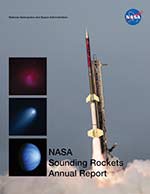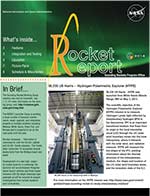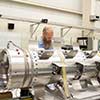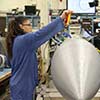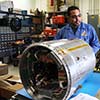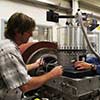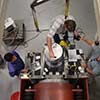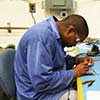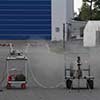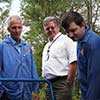
52.001 UE CONDE/U. OF ALASKA/FAIRBANKS
Cusp-Region Experiment (C-REX)
- Mission
- Vehicle
- Launch
- Photos
52.001 UE a Black Brant XII-A was launched from Andoya Rocket Range, Norway on November 24, 2014. The scientific objective of the mission is to identify mechanisms responsible for creating a region of enhanced neutral mass density at 400 km altitude that appears to be a permanent feature of Earth’s cusp-region thermosphere. Earth’s cusps are magnetic field features in the magnetosphere associated with regions through which plasma from the Sun can have direct access to the upper atmosphere. Neutral and ion flow fields in the region of the density anomaly were measured to see if that flow is consistent with establishing the observed density enhancementEarth’s cusps are magnetic field features in the magnetosphere associated with regions through which plasma from the Sun can have direct access to the upper atmosphere. To conduct the measurements, a Black-Brant XII-A sounding rocket was launched from Andoya Rocket Range in Norway and deployed 24 ampules of a barium/cupric oxide mixture with a small amount of strontium, or a barium cupric oxide mixture with a small amount of lithium over the Greenland Sea west of Svalbard, Norway. These chemical releases created colorful tracers in the sky visible from ground-based observation sites. Barium produces a cloud with a mixture of blue-green and red colors and lithium produces red cloud. Strontium in combination with neutral barium creates a bluish purple color. Tracking the strontium or lithium drifts will give neutral winds, whereas the barium drift will show ion velocities.
The 24 chemical tracer sub-payloads, divided into sets of four, were deployed over an altitude range of 150 - 400 km at 50 km intervals. By dispersing the tracer material over this range, ion and neutral particle flows can be tracked optically. It was possible to detect the flow direction by using both ionized (barium) and neutral (barium and lithium or strontium) chemistry. Small commercially available rocket motors were used to deploy the sub-payloads from the main payload, and when they reached a distance of between 17 and 30 km from the main payload, an electrical ignition system initiated the barium/cupric oxide reaction dispersing the clouds.
The Principal Investigator is Dr. Mark Conde/University of Alaska/Fairbanks.
Links:
http://www.nasa.gov/content/goddard/studying-interaction-of-solar-wind-and-earths-atmosphere/
The Black Brant XII-A is a four stage sounding rocket with a Talos first stage, Terrier second stage, Black Brant third stage and a Nihka fourth stage. The Black Brant XII-A can reach altitudes of about 1400 km. Payloads weighing from 300 to 1000 pounds can be flown.
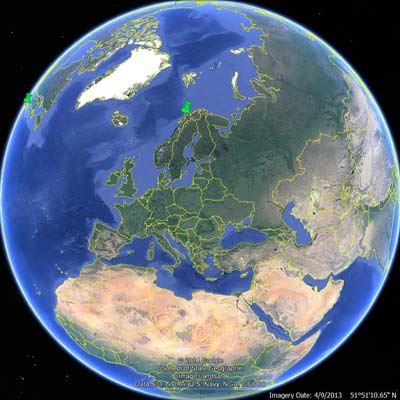
The C-REX mission was launched from Andoya Rocket Range, Norway on November 24, 2015..

